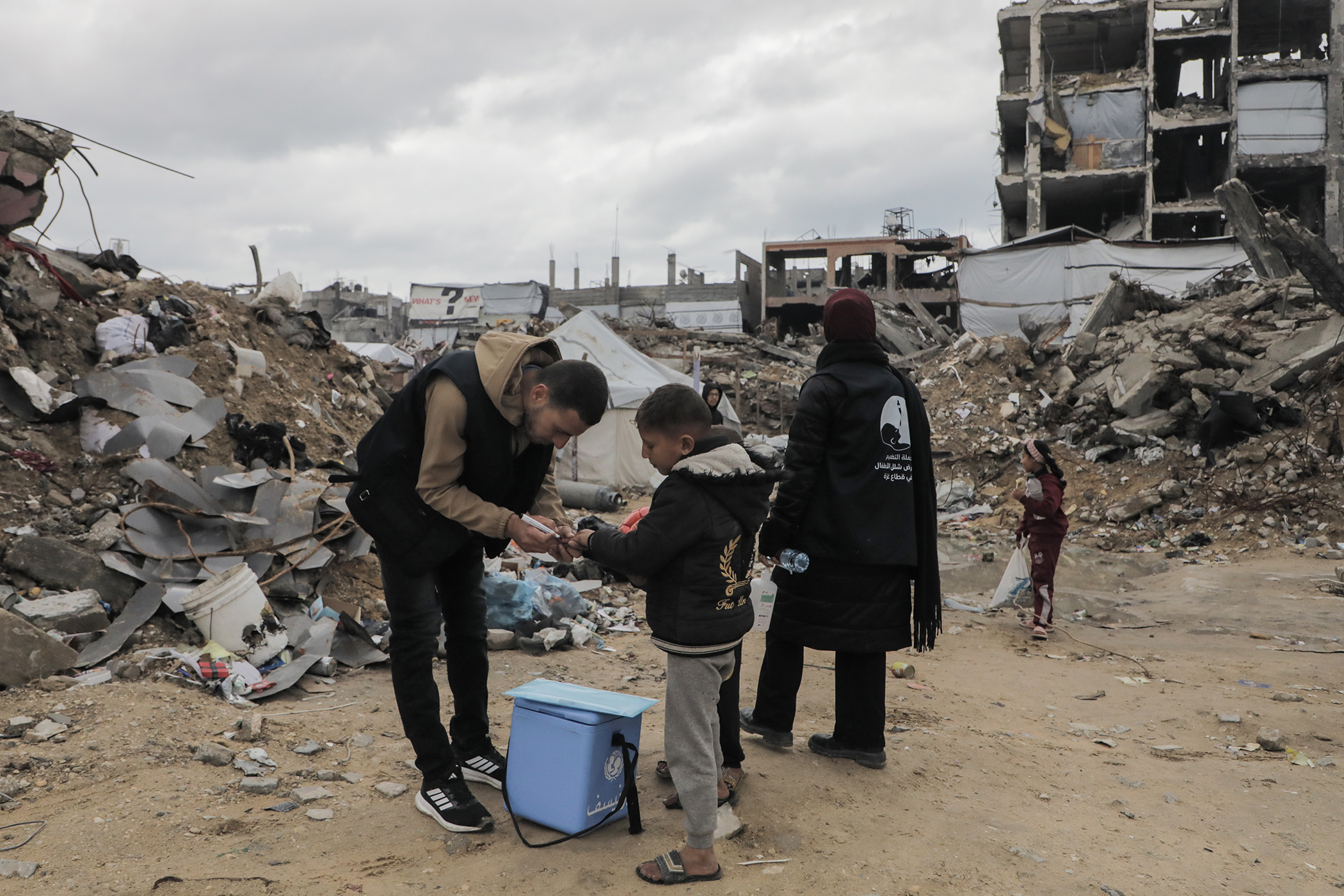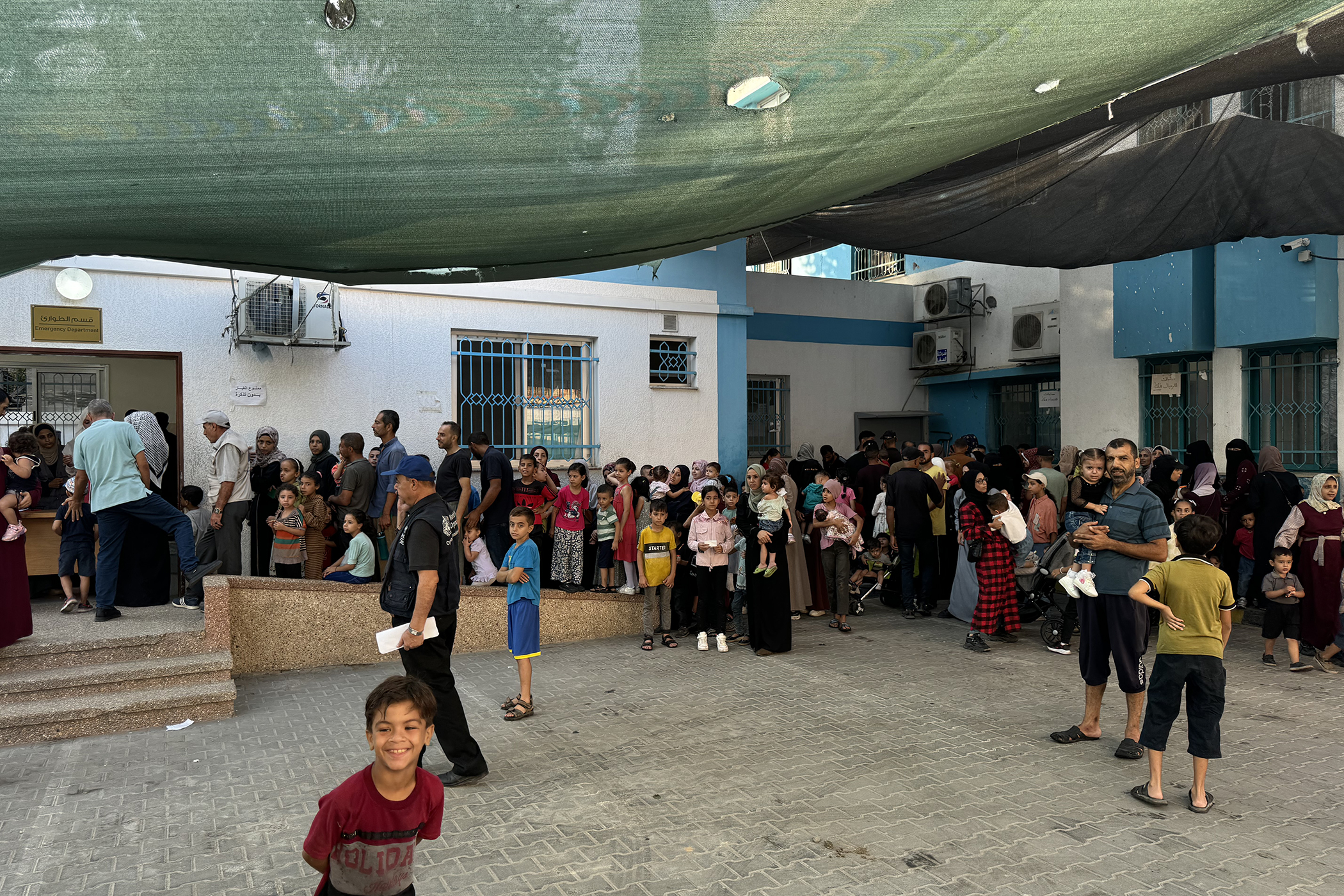Every morning, past dawn, for 12 consecutive days, the bombs stopped falling in Gaza — not permanently, just until the late afternoon. This staggered humanitarian pause, negotiated by leading health organizations, enabled health workers to fan out across Gaza — moving through displacement camps and communities amid the rubble. Carrying coolers of polio vaccines, teams navigated damaged roads and makeshift shelters to reach as many children as possible within the fragile daily window they were given.
That extraordinary pause in the ongoing Israel-Gaza conflict was set in motion months earlier. In July 2024, the poliovirus was detected in environmental samples from the Gaza Strip cities of Khan Younis and Deir al-Balah. Shortly after, in August 2024, a 10-month old child was paralyzed by the virus. Since then, no additional polio cases have been reported in children, although environmental samples continue to test positive, detecting the virus’ presence.
In response to the re-emergence of polio in Gaza — the first such case in 25 years — UNICEF, WHO, and the United Nations Relief and Works Agency for Palestinian Refugees (UNRWA) partnered with the Palestinian Ministry of Health to launch multiple polio vaccination campaigns.
The Global Polio Eradication Initiative notes the high risk of poliovirus spreading within Gaza due to weakened immunity in children from disrupted vaccination routines, a devastated health system, ongoing displacement, malnutrition, and severely damaged water and sanitation systems.
Typically, 80% vaccination coverage creates herd immunity, but due to severely compromised systems in Gaza, UNICEF and WHO aimed for 95% coverage in each polio campaign.
For months, UNICEF and the WHO appealed to all parties for a humanitarian pause to ensure health worker safety and campaign success. Due to intense bombardment, mass evacuation orders, and a lack of access, at one point the organizations postponed their scheduled vaccination campaign in Gaza. Once campaigns began, estimating how many children required vaccination proved difficult, as many had been displaced or killed. As of May 2025, over 50,000 children are reported to have been killed or injured in Gaza since October 2023.
To better understand the meticulous coordination and ongoing challenges of polio vaccine campaigns, Global Citizen spoke with Jean Gough, Special Representative for UNICEF in the State of Palestine. From chartering private planes with medical supplies to modifying the design of vaccine campaigns, our interview reveals the realities of delivering aid in what UNICEF has called “the most dangerous place in the world to be a child.”
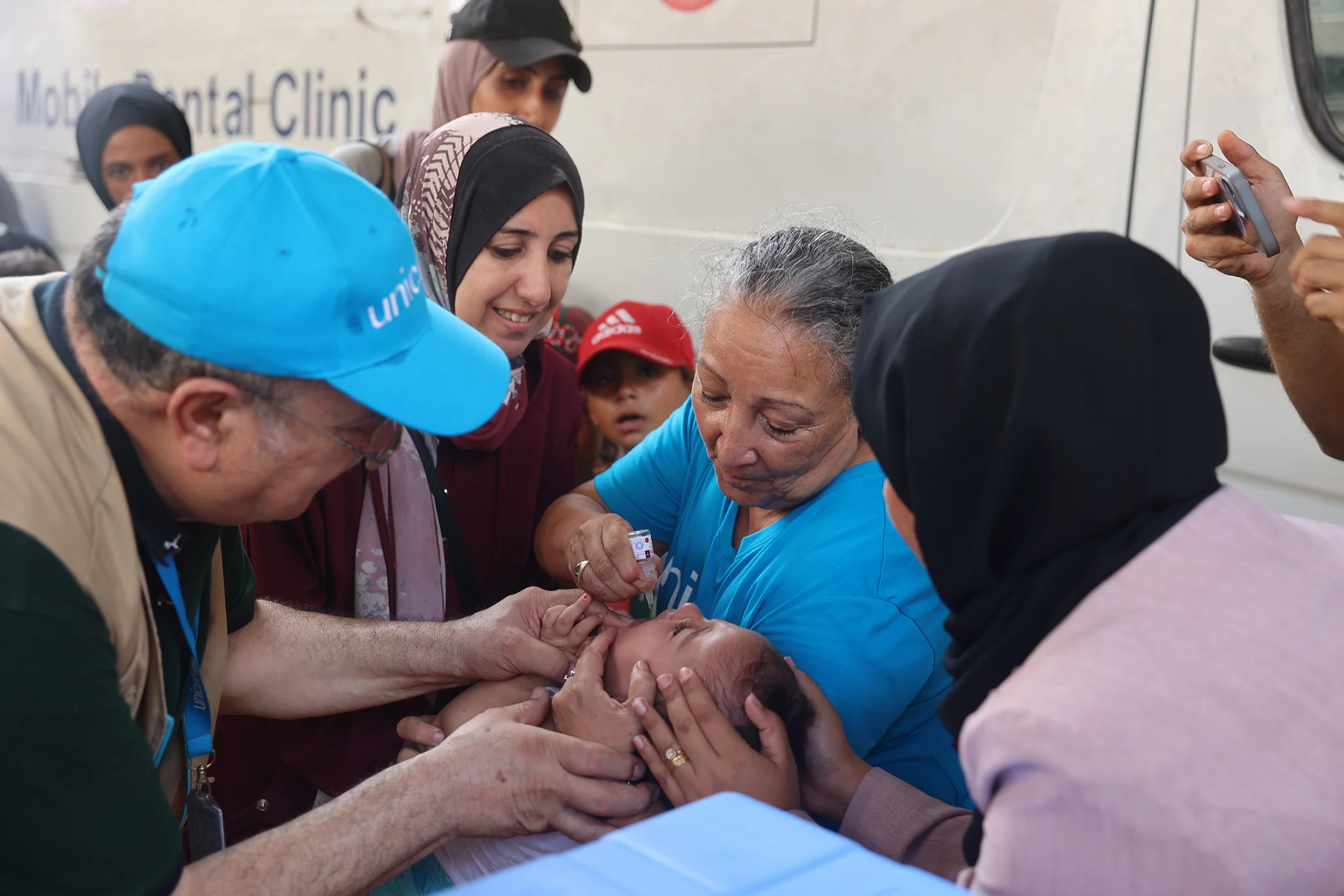 Jean Gough, Special Representative for UNICEF in the State of Palestine, administers polio vaccines in a health center in the Al-Daraj neighborhood of Gaza City in September 2024.
Jean Gough, Special Representative for UNICEF in the State of Palestine, administers polio vaccines in a health center in the Al-Daraj neighborhood of Gaza City in September 2024.
Note: This interview took place on May 14, 2025, and was edited for length and clarity.
Global Citizen: Once polio was detected in environmental samples, what was UNICEF’s response to stop the spread of the virus?
Jean Gough: We took action immediately. Bringing in vaccines in a context of war [is difficult]. The cold chain was totally destroyed, so we needed to bring in cold chain equipment, not only the vaccines. This was around the time… when all the flights to Israel were cancelled, so we had to charter two flights. We consolidated vaccines and vaccine carriers, cold chain, and fridges. The flights were among the last allowed to land in Tel Aviv, enabling us to proceed with the campaign.
Global Citizen: What is the current status of polio vaccination campaigns in Gaza?
Jean Gough: We have conducted three vaccination campaigns in Gaza so far — two during staggered humanitarian pauses and the third during a ceasefire. We have not been able to conduct the fourth round because the borders remain closed and vaccines have not been permitted entry. Additionally, no pause in the fighting has been agreed to for the next campaign.
Global Citizen: Tell us about how UNICEF and WHO coordinated the vaccine campaigns amid the conflict, and how these campaigns were designed for maximum reach.
Jean Gough: One of the most difficult things was reaching an agreement to a pause in fighting. In the beginning, we wanted to apply the golden standard of polio vaccinations, which was five days of consecutive vaccines to all children at once. COGAT [the Coordinator of the Government Activities in the Territories] were not willing to completely pause for five days. They agreed to pause airstrikes in phases — starting in the southern area, then the middle, and the north, to enable us to roll out the vaccine campaign in phases. This has its own difficulties, because the population moved, so we took a risk not knowing if we would reach every child.
We felt it was important to proceed with the campaign, even if we needed to compromise. We came up with a new model to vaccinate children in phases. It took 12 days to complete this full campaign. Ideally, the golden standard is to go house to house — in this case it was not possible. Instead, we used primary health centers, the health post, and community outreach to follow up and locate missed [unvaccinated] children, increasing the risk of leaving some behind.
Global Citizen: What supplies did UNICEF bring into Gaza for the vaccination campaigns?
Jean Gough: Given the loss of many primary health care centers, we did not have access to refrigerators and cold chain [products] like vaccine carriers. We brought in more than 1,000 vaccine carriers to make sure all vaccinators were equipped. We also had to bring in 20 solar-powered refrigerators to vaccination sites because there was no energy. During the campaign, we bought fuel for the generators [to keep cold chain products at the appropriate temperature], but after the campaign, there was no fuel. That’s why we began installing solar refrigerators across Gaza. However, frequent evacuation orders made this difficult; sometimes we installed them, only to remove and reinstall them again elsewhere.
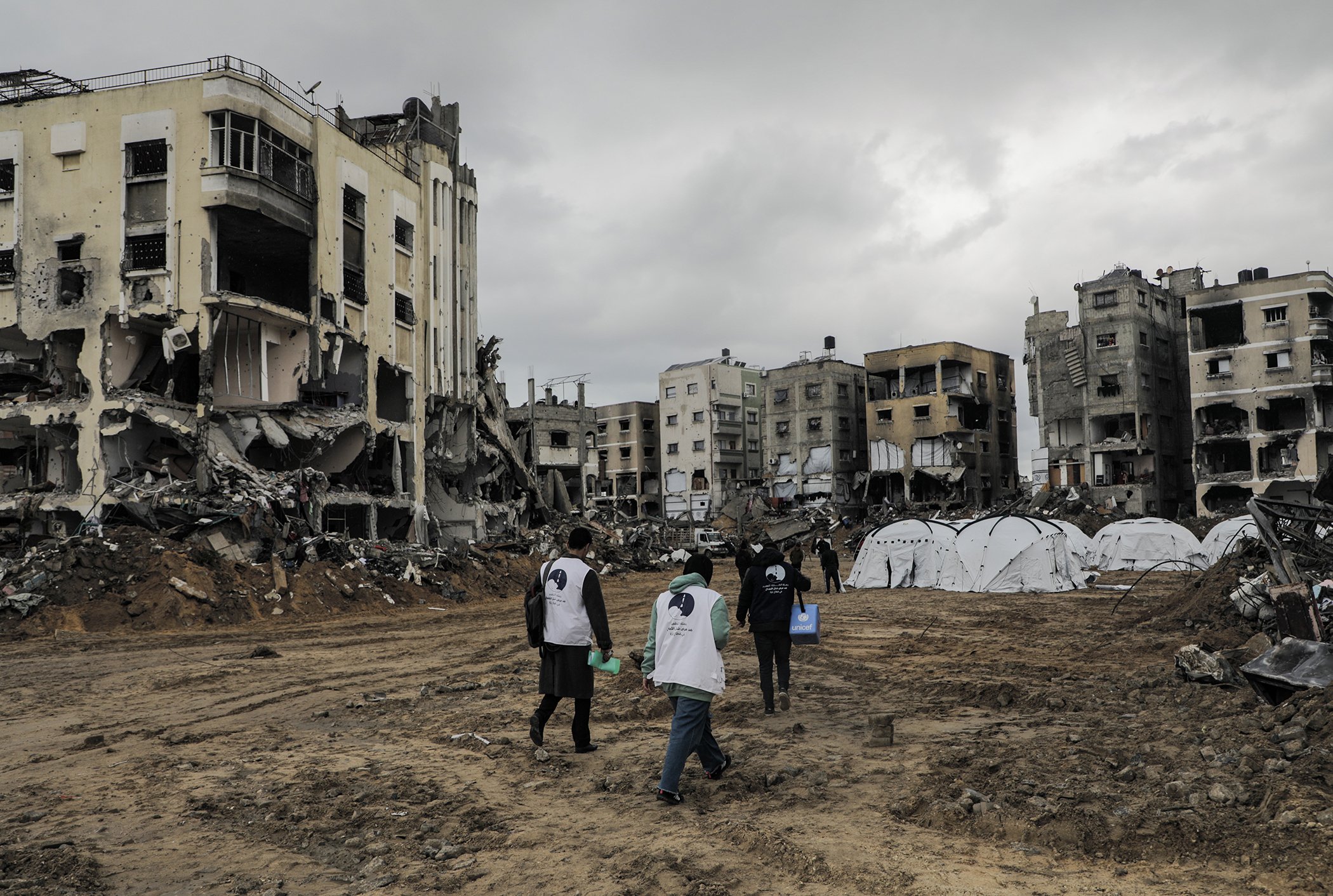 Health workers are pictured in Jabalia, in northern Gaza, as part of a vaccination campaign that ran in February 2025.
Health workers are pictured in Jabalia, in northern Gaza, as part of a vaccination campaign that ran in February 2025.
Global Citizen: Once these vaccine campaigns were in progress, what were the challenges UNICEF and WHO experienced on the ground?
Jean Gough: Another part that made this complicated was getting access to go to local areas where we had estimated there was a population [in need of vaccines]. Israelis said there were no people there, but when we [got access and] went, we were able to find people and vaccinate children. That negotiation to go to the “no go” areas was challenging. Either UNICEF or WHO needed to take the vaccines to those locations, make sure that the children get vaccinated, and return to collect the vaccines again [to dispose of the extras]. That complexity when you operate during the war makes this campaign more difficult.
The other thing that we struggled with was the mobility of people, because people had been displaced several times, so we didn’t know how many children we had [to vaccinate]. That figure, we overestimated at the beginning, because we thought we had more children. The ceasefire allowed us to reach 603,000 children. In the previous round, we reached 556,774 — evidence that displacement made accurate estimations difficult. I think we had good results, given the complexities.
Global Citizen: With over 1,400 healthcare workers killed in Gaza, and humanitarian organizations reporting experiencing airstrikes and convoys being fired upon, what actions did you take to secure the safety of health workers during these vaccine campaigns?
Jean Gough: We agreed to pauses in locations where campaigns were active — from 6 a.m. to 3 p.m. — during which time the Israeli military committed not to launch airstrikes and halt military activity in these areas. That gave confidence to the health workers to go out, because they have to sweep the streets to make sure no child is left behind. That was an important agreement, and we are very grateful because without that agreement, we would not be able to do the campaign.
Global Citizen: Food security is a major issue in the Gaza Strip, with over 71,000 children being at risk of acute malnutrition. Since malnutrition reduces the effectiveness of polio vaccines, tell us more about this link and what UNICEF is doing in response.
Jean Gough: Malnutrition weakens a child’s immune system, increasing the risk that they may develop polio. Critics — and every program has its critics — thought we put too much emphasis on polio and maybe we should be doing more regarding malnutrition. But polio has a very high transmission rate, and the long-term consequences — including permanent disability — can be devastating. We are working to continue treatment for children with acute malnutrition, but we also need to focus more on prevention, but that depends on food availability.
Global Citizen: What has it been like working alongside Palestinian health workers under siege conditions? Can you share an example of their courage or creativity in reaching children during vaccination campaigns?
Jean Gough: Without the Palestinian health workers and the resilience they have, this [vaccination] program would not have happened. They solve problems because they're used to solving problems every day of their life. The commitment and dedication of all the teams on the ground, their ability to fix things, is so amazing and it’s so rewarding for me to work with them. The technical capacity inside Gaza is still strong in spite of the war and where they live — they are just missing the supplies which compliment their abilities.
So many educated young people in Gaza joined the polio vaccination campaigns as volunteers. The social mobilization piece was easier than other contexts, because we had many students who were studying medicine and nurses who already knew about polio and public health. They would go into communities and tell people about polio, contamination, and the vaccine so that improved the quality of our campaign since we didn't have enough time to train everyone, unlike in other contexts.
What I really liked is that it [vaccination days] was like a fiesta. The women would dress up, and it was like a special occasion to bring their children to the vaccination center. People were not going outdoors, but this was an opportunity to go out. Before the primary care centers would open, they were already there in long lines; the men and women, the all kids would come. It was a family affair. This is because of the social mobilization that young people did in advance of the campaign.
Global Citizen: You’ve spent decades working to tackle polio in a range of challenging contexts. How do the conditions in Gaza compare with other settings you’ve worked in?
Jean Gough: I worked in Nigeria, where we had challenges due to conflict and Boko Haram, but we could still bring in vaccines. The access restrictions have more impact here, so I think this [Gaza polio campaign] is one of the most difficult. Also, everything is more controlled. There are several types of governments that we have to deal with and there [Nigeria], it was one. I also worked in Afghanistan and we had a lot of restrictions reaching children in Taliban controlled areas. So every place has its uniqueness, but the uniqueness of this context [Gaza] is not easily replicable.
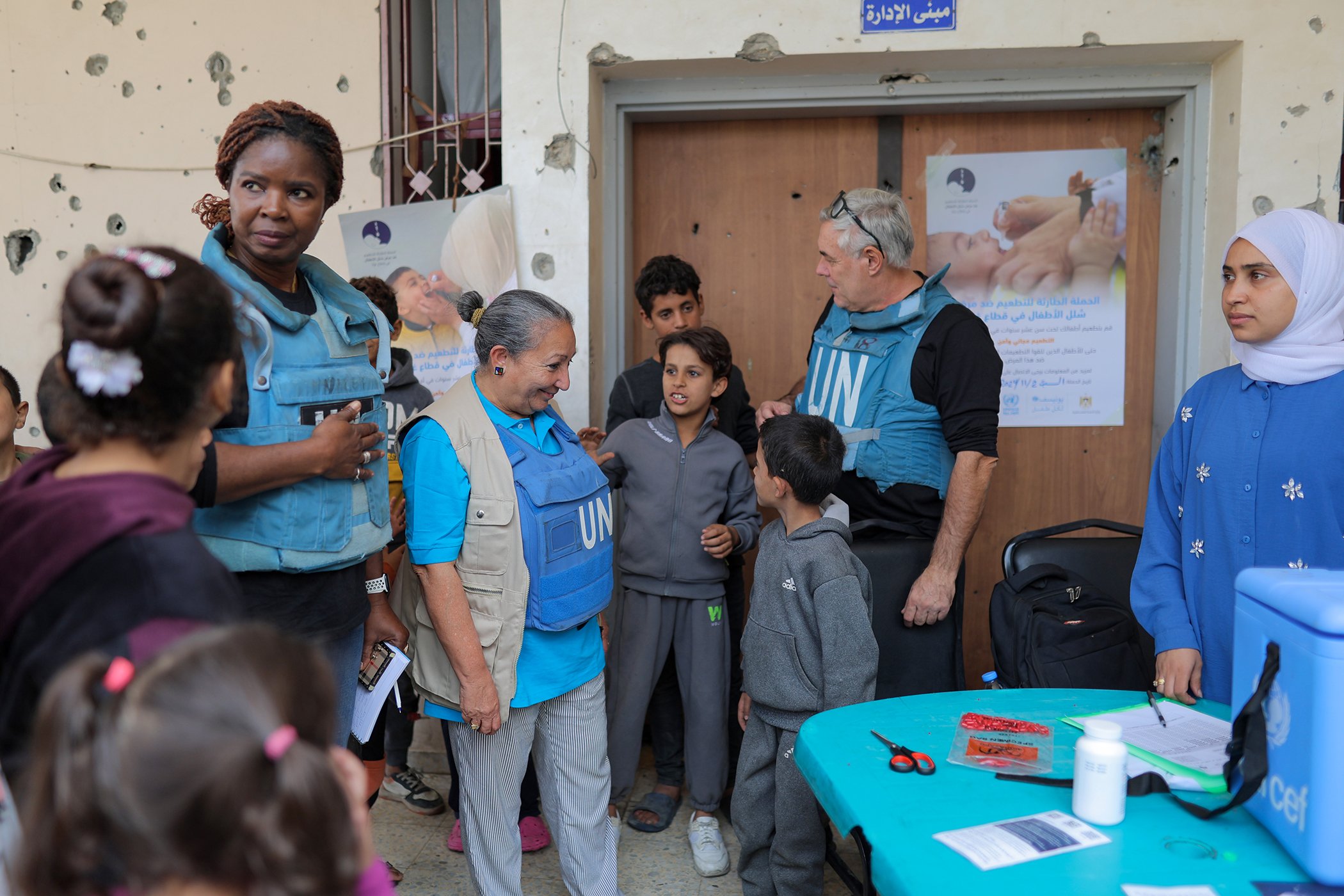 Jean Gough, Special Representative for UNICEF in the State of Palestine, is pictured during a polio vaccination campaign in Gaza in 2024.
Jean Gough, Special Representative for UNICEF in the State of Palestine, is pictured during a polio vaccination campaign in Gaza in 2024.
Editor’s Note: This article is part of Global Citizen's original reporting on polio worldwide, made possible by funding from the Bill & Melinda Gates Foundation.

